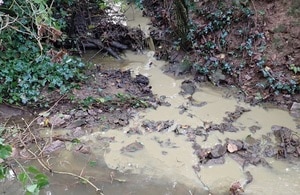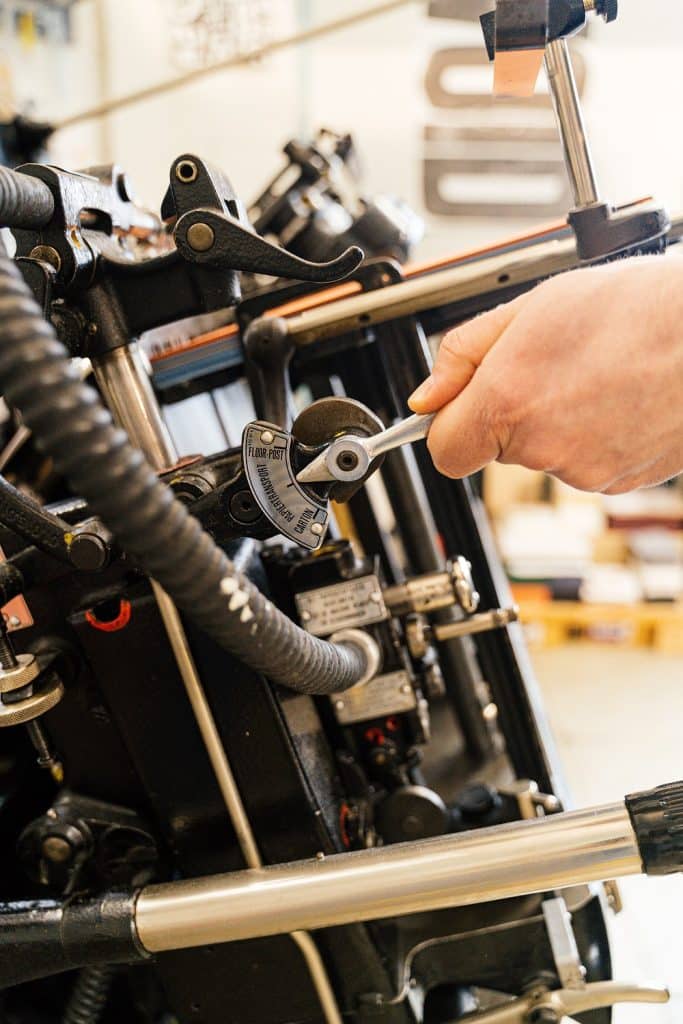A Wellington dairy farmer pollution prosecution following incident after slurry entered watercourse.
A farmer has been given 14 weeks in prison suspended for a year and ordered to pay £10,000 costs after he persistently allowed slurry to run off into a stream near his farm.
David Bartlett, aged 70, of Upcott Dairy Farm, Sampford Arundel, Wellington, appeared for sentencing before District Judge Brereton at Taunton magistrates’ court on Thursday 18 July.

He had previously pleaded guilty to three offences relating to pollution to the Westford stream, a tributary of the River Tone. He was also ordered to pay £154 victim surcharge.
In a case brought by the Environment Agency, the court heard that the farm had a long history of failing to properly contain slurry and had been warned several times in the past for causing pollution of the Westford stream.
In October 2022, Agency officers installed remote monitoring equipment on the stream which confirmed regular pollution events were continuing to occur.
Using the data from the remote monitoring, officers went to the monitoring site in December 2022 where they found significant amounts of sewage fungus contaminating the bed of the watercourse, an indication of persistent pollution.
Pollution resulted in poor quality of water
Continuing upstream towards Upcott Dairy Farm, colonies of bloodworm were evident. These are a species of pollution tolerant organism associated with poor water quality. No invertebrate life forms were noted when stones in the stream bed were turned over, further indicating the poor quality of the water.
Near the farm, one of the officers saw a nearby ditch had suddenly started to discharge a significant amount of effluent with the appearance and smell of slurry. The source was quickly traced to an overflowing underground slurry tank on Upcott Dairy Farm.
Officers also investigated the system used for applying slurry to fields. Typically, farmers will use slurry to provide nutrients to their crops or grass. Bartlett was using a simple pipe to dispose of slurry in a single location.
Although not discharging slurry at the time of the pollution event inspection, it was clear there was significant contamination of slurry around the end of the pipe and evidence that slurry had tracked down the field toward the Westford stream.
A subsequent visit found slurry being pumped on to waterlogged land with no attempt to use the slurry for crop benefit. The slurry was several inches thick in the field indicating it had been pumped over a prolonged duration in the same location.
Toward the bottom of the field there was a significant build-up of mud and slurry either side of the gateway crossing the stream. This too presented a risk of further runoff pollution into the stream.
Pollution survey revealed stream affected for 2.5km
A biologist’s survey and report confirmed that the Westford stream had experienced repeated, acute and sustained chronic pollution events by slurry. Lack of slurry storage had led to slurry being pumped inappropriately on to a single patch of land where it was likely to run-off and cause pollution.

Bartlett had failed, despite repeated warnings, to install slurry storage facilities that would allow slurry to be stored during winter when ground conditions were unsuitable.
The report stated there had been “a significant negative impact on the aquatic invertebrate community and water quality along 2.5km of Westford stream.”
Bartlett submitted a statement to the Environment Agency in which he made limited admissions, implying others, such as his neighbour and the local authority were responsible. He denied deliberately pumping slurry into the watercourse.
Judge Brereton said there were significant aggravating features in the case, including Bartlett having previously been warned over causing pollution, his failure to carry out proper checks or make structural improvements by way of an adequate, compliant slurry storage system which is capable of storing slurry having received funds from the Rural Payments Agency to pay for infrastructure that would improve the environment and not cause significant, sustained pollution incidents.
Dairy farmer repeatedly ‘failed to acknowledge’ advice
David Womack of the Environment Agency said:
This farmer has, over the years, caused numerous pollution incidents and he has repeatedly failed to acknowledge the advice given or to improve the facilities for storing or properly using slurry.
For over 30 years there has been legislation in place requiring all livestock farmers to have storage facilities capable of storing a minimum of four months’ slurry production. The 2018 Reduction and prevention of Agricultural Diffuse Pollution Regulations now also require farmers to plan all applications of slurry in order to reduce the risk of pollution. Pumping slurry on to waterlogged land is unlawful and is likely to cause diffuse pollution.
We hope Mr Bartlett will now work with us to voluntarily improve the facilities at Upcott Dairy Farm. If he doesn’t, we won’t hesitate to use other legislative powers to reduce the risk of further pollution
Pollution prosecution charges
The charges against the defendant were:
- On and before the 2 December 2022 you, David Bartlett, did cause an unpermitted water discharge activity, namely the discharge of poisonous, noxious or polluting matter from Upcott Dairy Farm, Sampford Arundel, Wellington, Somerset, into inland fresh waters contrary to Regulations 12(1)(b) and Regulation 38(1)(a) of the Environmental Permitting (England and Wales) Regulations 2016.
- On and before the 2 December 2022 you, David Bartlett, a Land Manager did not ensure that organic matter, namely cattle slurry, was not applied to agricultural land that was waterlogged, flooded or snow covered in that you applied organic fertilizer to waterlogged ground contrary to Regulation 3(a) and 11 of the Reduction and prevention of Agricultural Diffuse Pollution (England) Regulations 2018
- On and before the 2 December 2022 you, David Bartlett, a Land Manager did not ensure that for each application of organic or manufactured fertilizer to agricultural land, the application was planned so as not to give rise to a significant risk of agricultural diffuse pollution contrary to Regulation 4(1)(a)(ii) and 11 of the Reduction and Prevention of Agricultural Diffuse Pollution (England) Regulations 2018.
Prevent pollution with effective slurry management
Effective slurry management is crucial for both environmental sustainability and farm productivity. Here are some best practices for slurry management in the UK:
- Assess Nutrient Content: Use tools like the Nutrient Management Guide (RB209) to determine the nutrient content of your slurry. This helps in applying the right amount to meet crop needs.
- Proper Storage: Ensure you have enough well-maintained storage to hold slurry until conditions are optimal for spreading. Covering slurry stores or allowing a natural crust to form can reduce ammonia emissions.
- Application Timing: Spread slurry when crops can best utilize the nutrients, typically during the growing season. Avoid spreading during wet conditions to prevent runoff and water pollution.
- Application Methods: Use low-emission spreading techniques such as trailing shoe or injection methods to minimize ammonia loss and improve nutrient uptake by crops.
- Safety Measures: Always prioritize safety when handling slurry. Ensure proper ventilation and avoid entering enclosed slurry spaces due to the risk of toxic gases.
- Compliance with Regulations: Stay updated with local regulations and take advantage of available grants and support schemes, such as the Slurry Investment Scheme (SIS), to improve your slurry management practices.
Implementing these practices can help you manage slurry more effectively, benefiting both your farm and the environment.
If you require environmental advice for your business, please contact one of the Ashbrooke team.








